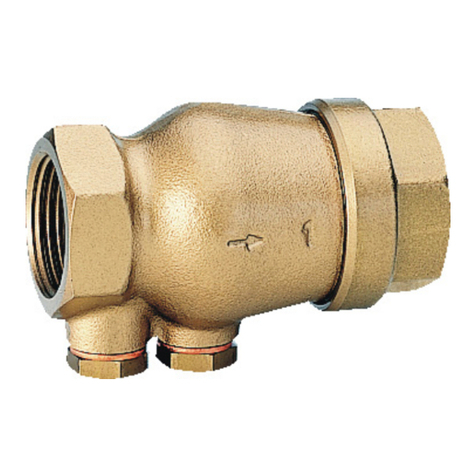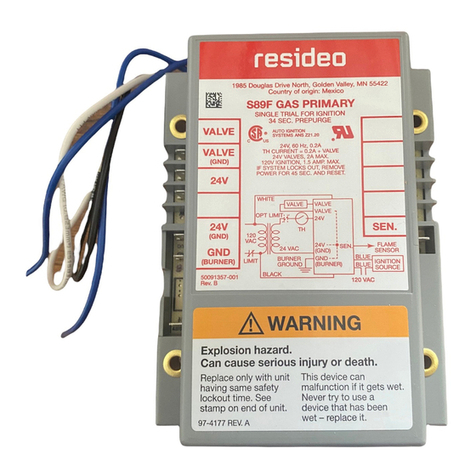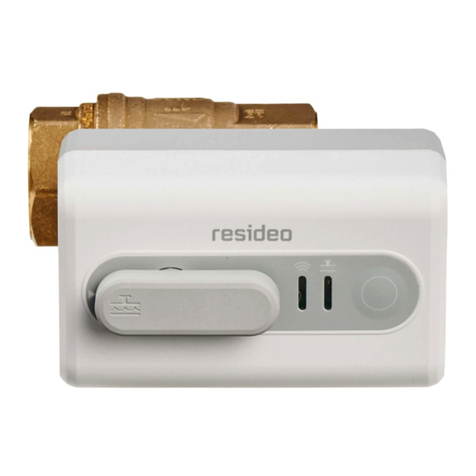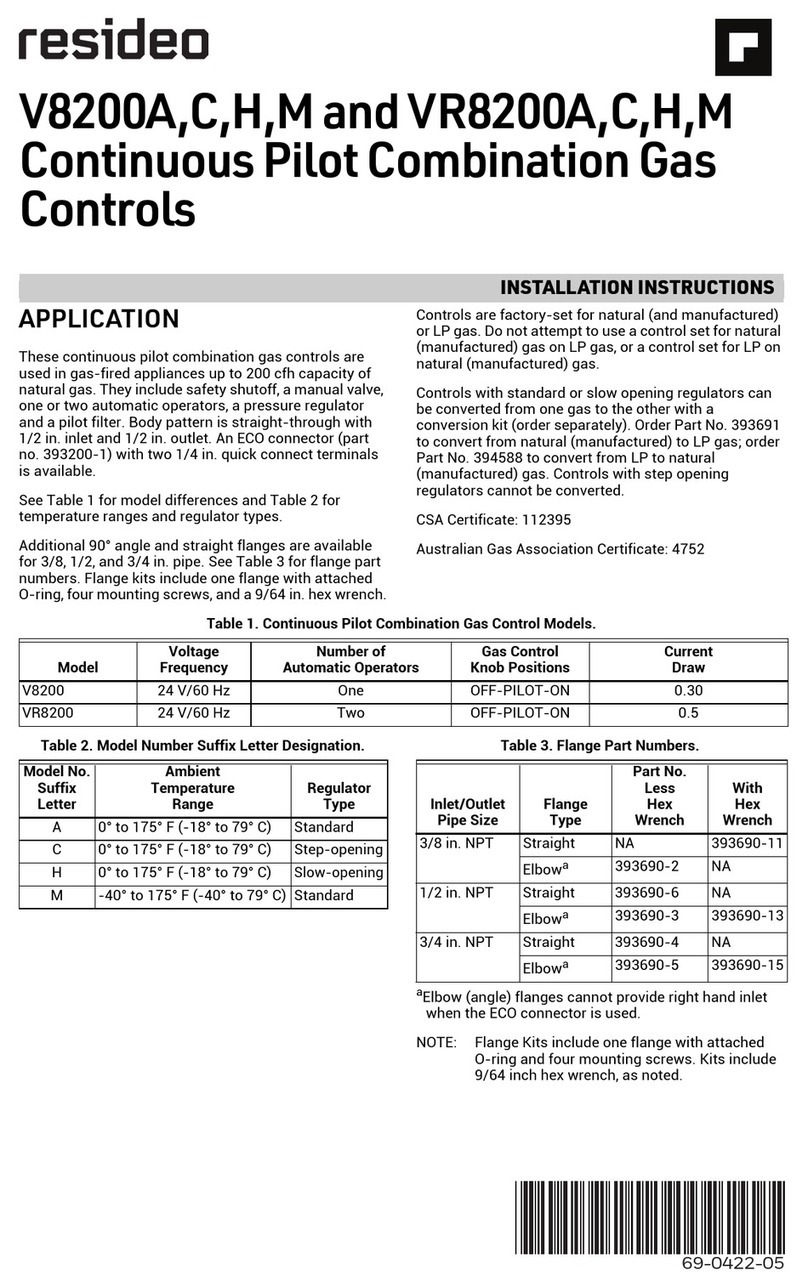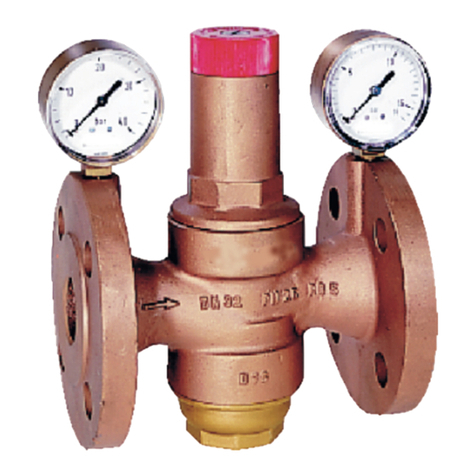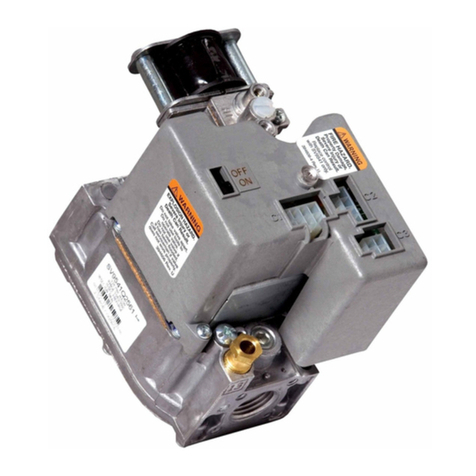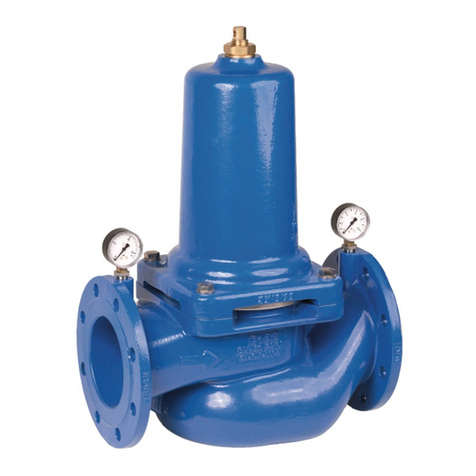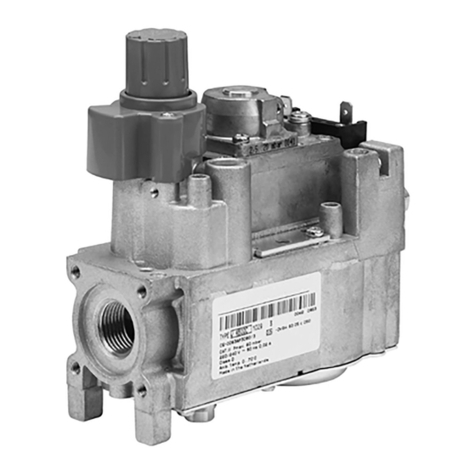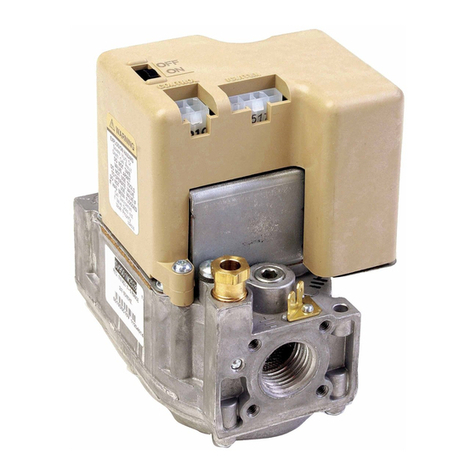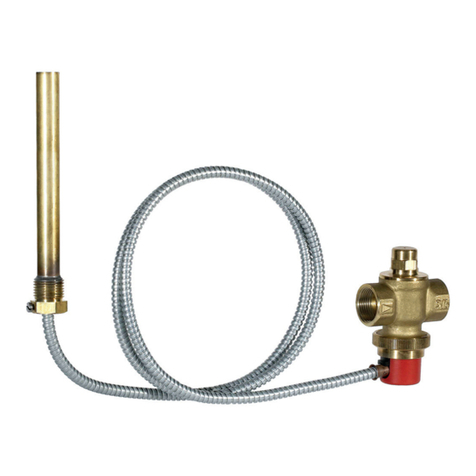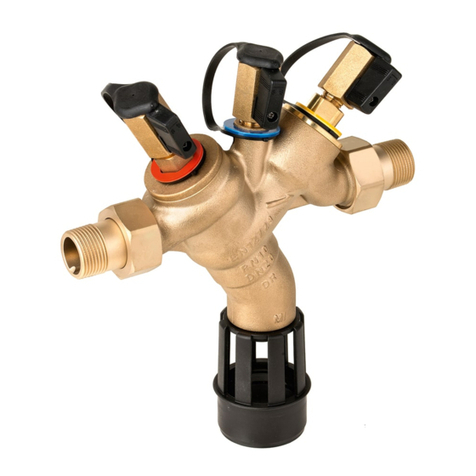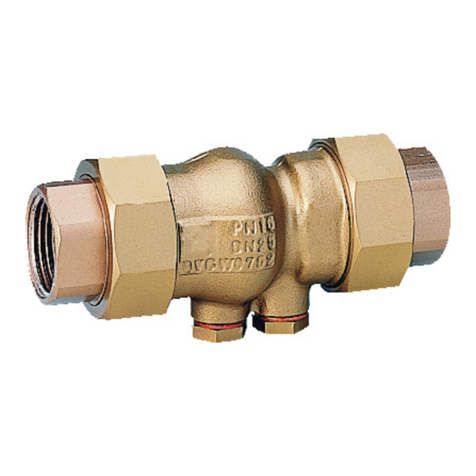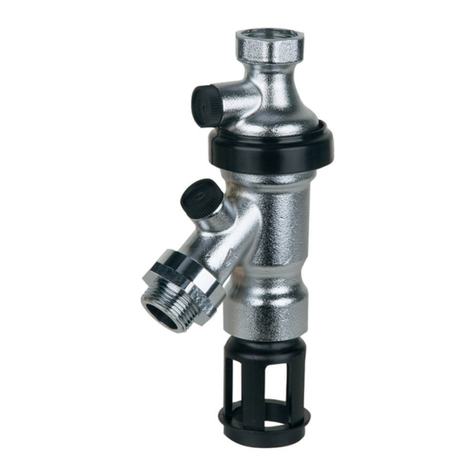
S8910U UNIVERSAL HOT SURFACE IGNITION MODULE
69-0845—03 6
Corrosive Chemicals
Corrosive chemicals can attack the module and gas
control, eventually causing a failure. If chemicals are
used for routine cleaning, avoid contact with the controls.
Where chemicals are suspended in air, for some
industrial or agricultural applications, a NEMA 4
enclosure is recom-mended for the ignition module; see
the Electronic Ignition Service Manual, form 70-6604.
Dust or Grease Accumulation
Heavy accumulations of dust or grease can cause
controls to malfunction. Where dust or grease can be a
problem, provide covers for the module and the gas
control to limit contamination. A NEMA 4 enclosure is
recommended for the ignition module; see the Electronic
Ignition Service Man-ual, form 70-6604.
Heat
Excessively high temperatures can damage controls.
Make sure the maximum ambient temperature at the
control does not exceed the rating of the control. If the
appliance operates at very high temperatures, use
insulation, shielding, and air circulation as necessary to
protect the controls. Proper insulation or shielding
should be provided by the appliance manufacturer; verify
proper air circulation is maintained when the appliance is
in-stalled.
INSTALLATION
When Installing this Ignition
System...
1. Read these instructions carefully. Failure to follow
them could damage the components or cause a
hazardous condition.
2. Check Table 1 through 3 to confirm that the
S8910U is a direct replacement for the existing
module.
3. Installer must be a trained, experienced service
technician.
4. After installation is complete, check out compo-
nent and appliance operation as provided in these
instructions.
FIRE OR EXPLOSION HAZARD CAN CAUSE
PROPERTY DAMAGE, SEVERE INJURY, OR
DEATH.
1. If the ignition module gets wet, it can
malfunction, leading to accumulation of
explosive gas.
• Never install where water can flood, drip or
condense on the module.
• Never use a module that has been wet.
Replace it.
2. Liquefied petroleum (LP) gas is heavier than air
and will not vent upward naturally.
• Do not light the pilot or operate electric
switches, lights or appliances until you are
sure the appliance area is free of gas.
3. Do not attempt to disassemble or clean the
module. Improper reassembly and cleaning
can cause unreliable operation.
1. Disconnect the power supply before beginning
wiring to prevent electrical shock or equipment
damage.
2. If a new gas control is to be installed, turn off
the gas supply before starting the installation.
After the gas control is installed, conduct a Gas
Leak Test according to the gas control
manufacturer instructions.
3. If a module must be mounted where it can be
exposed to moisture or water, provide a
suitable waterproof enclosure.
4. Using the wire labels provided, label all the
wires before disconnecting. Wiring errors can
cause improper appliance operation and
dangerous conditions such as bypassing
safety features.
Perform Preinstallation Safety
Inspection
A preinstallation safety check of the appliance and
venting system must be done before the replacement
module is installed. If a condition is detected that could
result in unsafe operation, shut off the appliance and
advise the owner of the unsafe condition. Correct any
potentially unsafe condition before proceeding with the
installation.
Remove Old Module
Disconnect the power supply before doing any work on
the unit. Disconnect and tag the wires from the old
module using the wire labels provided. Remove the old
module from its mounting location.
Mount New Ignition Module
Mount the S8910U Module in the same location as the
old module. Protect the module from exposure to water,
moisture, corrosive chemicals and excessive dust and
grease. Assure that ambient temperature at the module
is within the range listed in the Application section.
Mount the module with the terminals down to protect
from dripping water and dust. The module can also be
mounted with terminals on either side. Do not mount
with the terminals pointing up. Refer to Fig. 1 for
mounting recom-mendations. When it is necessary to
drill new mounting holes, use the S8910U as a template
to mark the mounting hole pattern. Drill new holes as
required. Fasten securely with four No. 6-32 machine or
No. 8 sheet metal screws.
Install Selection Tab
Four selection tabs are included with the S8910U. See
Table 1 through 3. Select the correct tab for the system
and separate the tab from the other three tabs. Install the
tab on the module. Be sure the selection tab is properly
positioned and firmly inserted. See Fig. 2. Discard all
unused selection tabs at a remote location so an
incorrect tab cannot be used in the future. Without a
selection tab, the module operates at four-second trial
time and one ignition trial.
